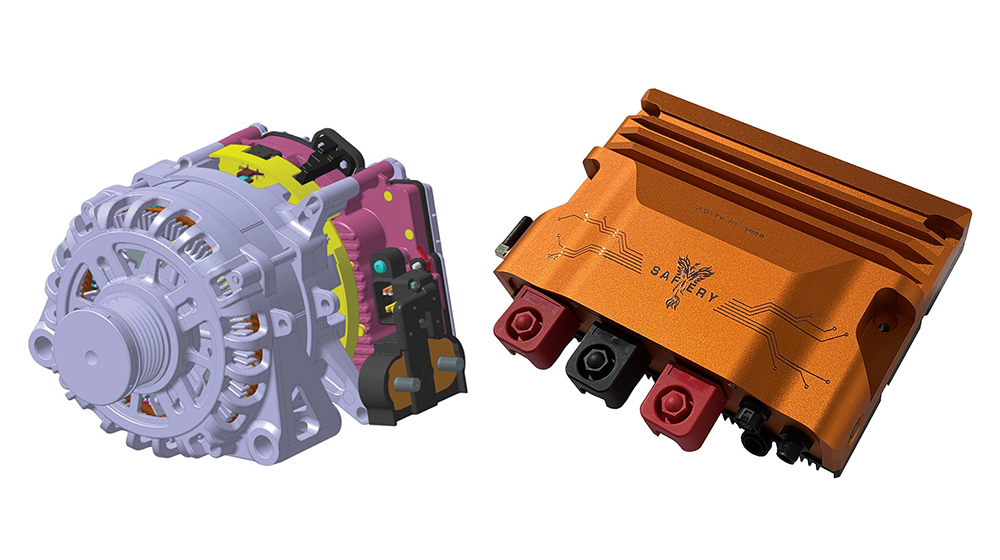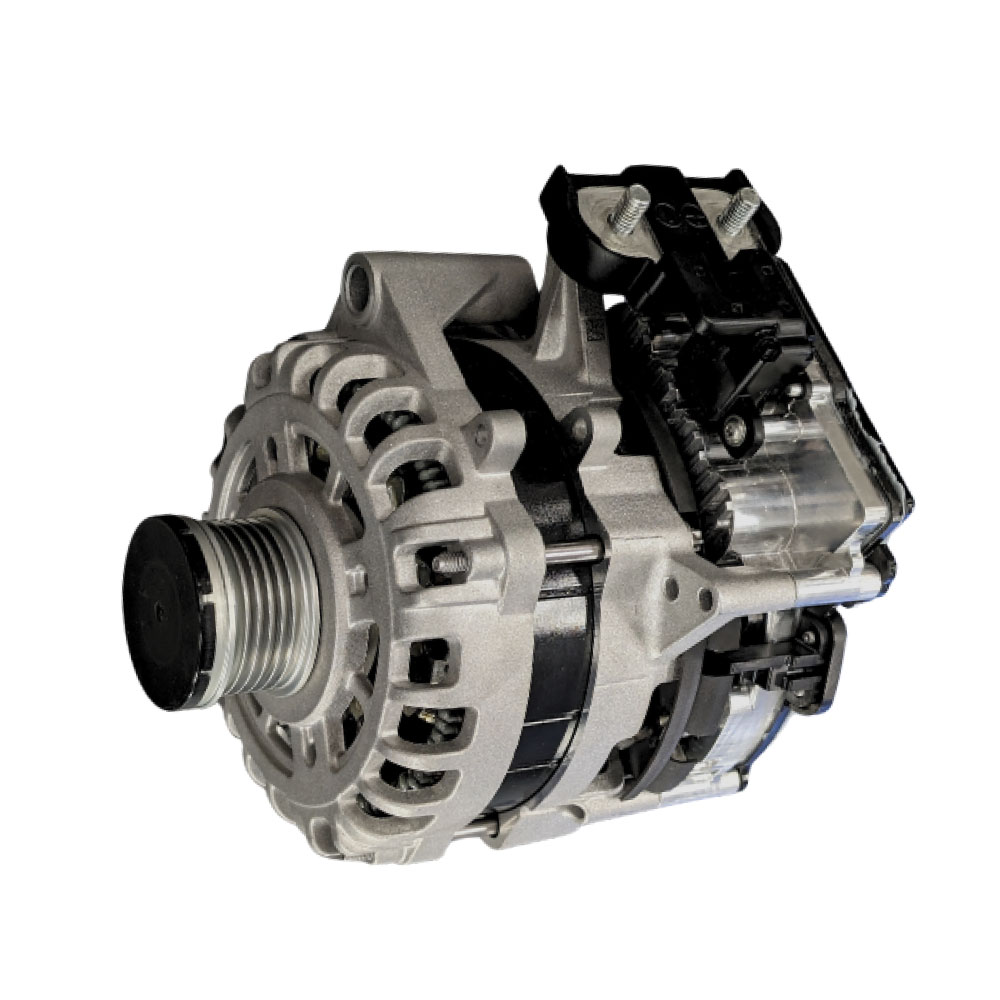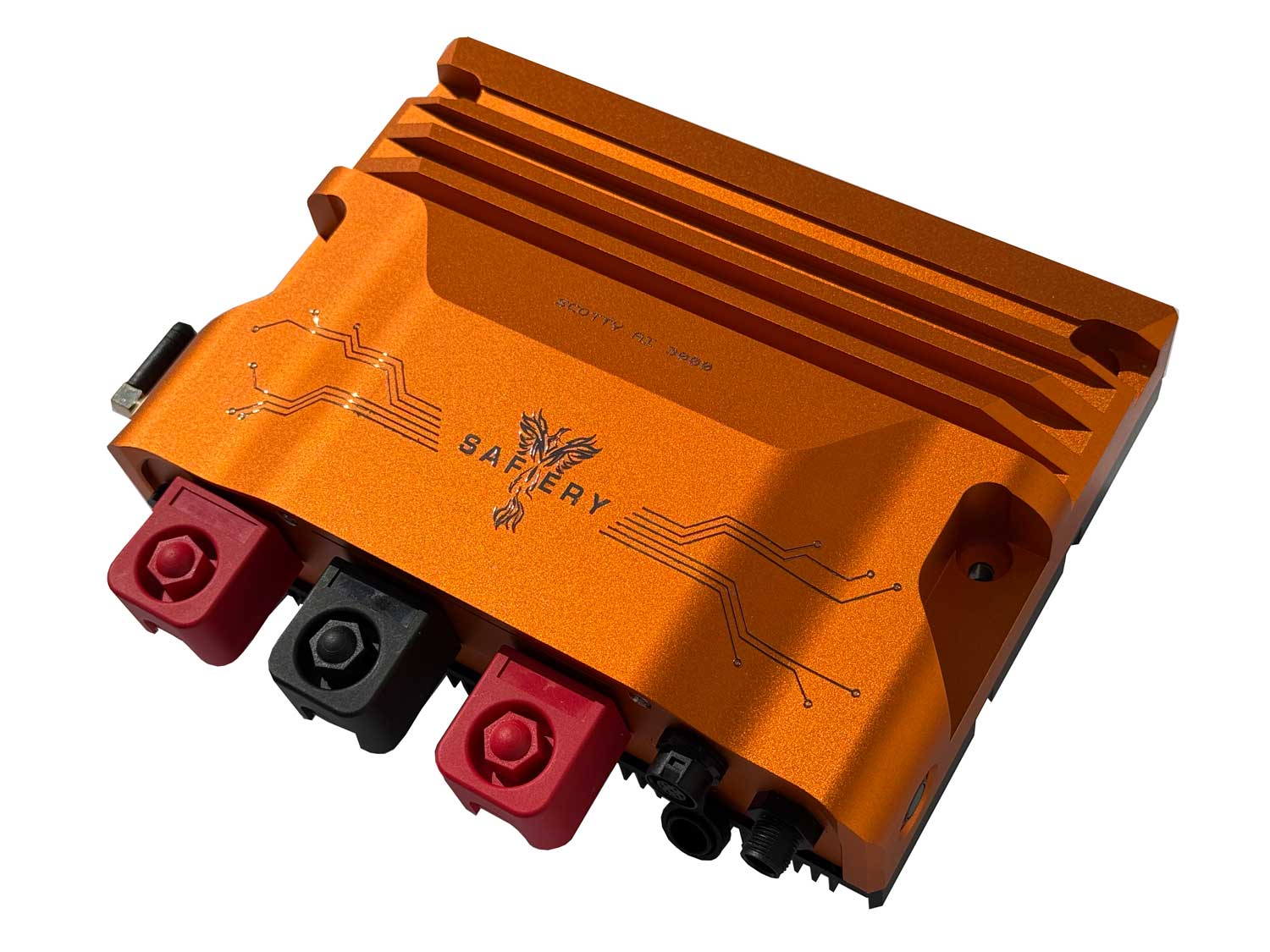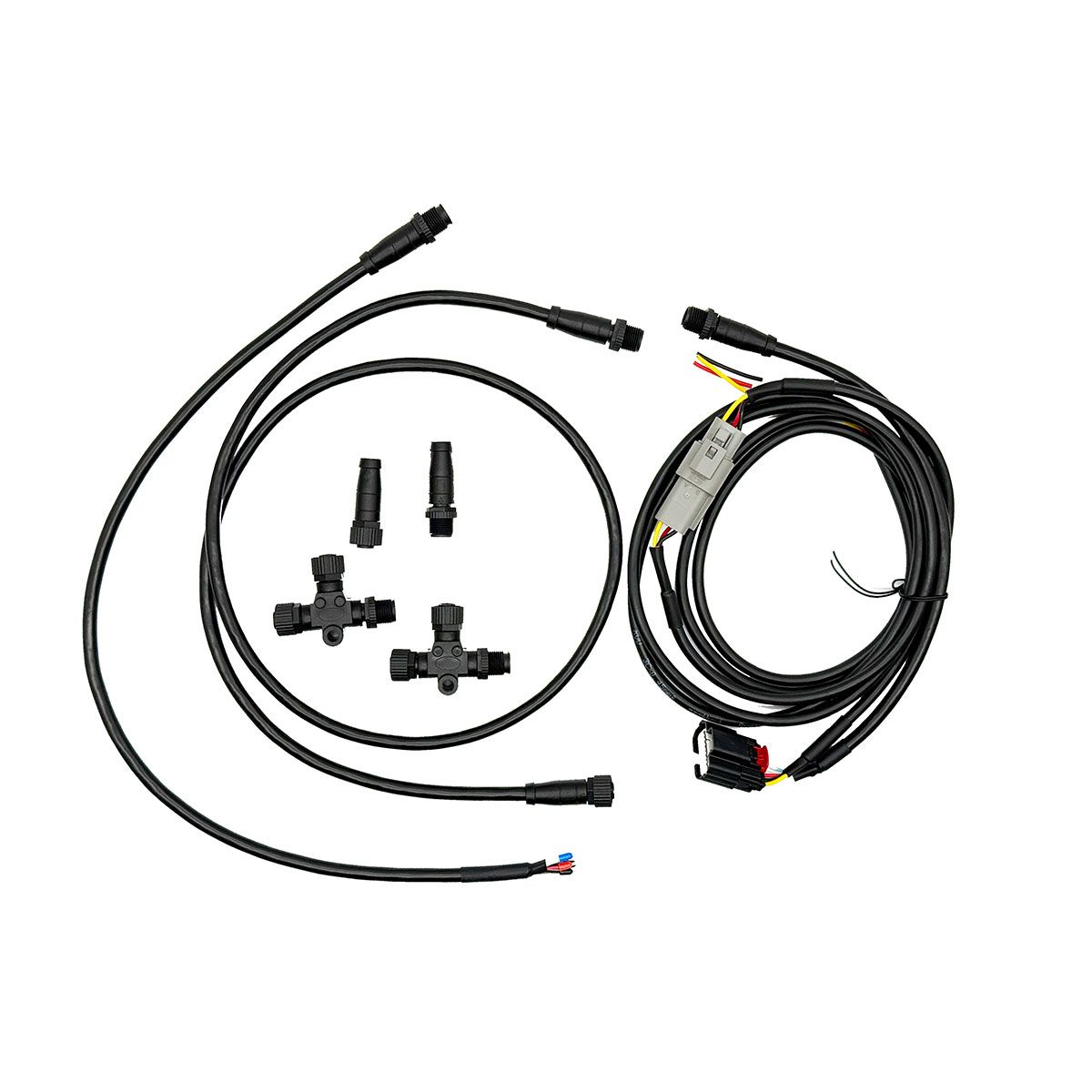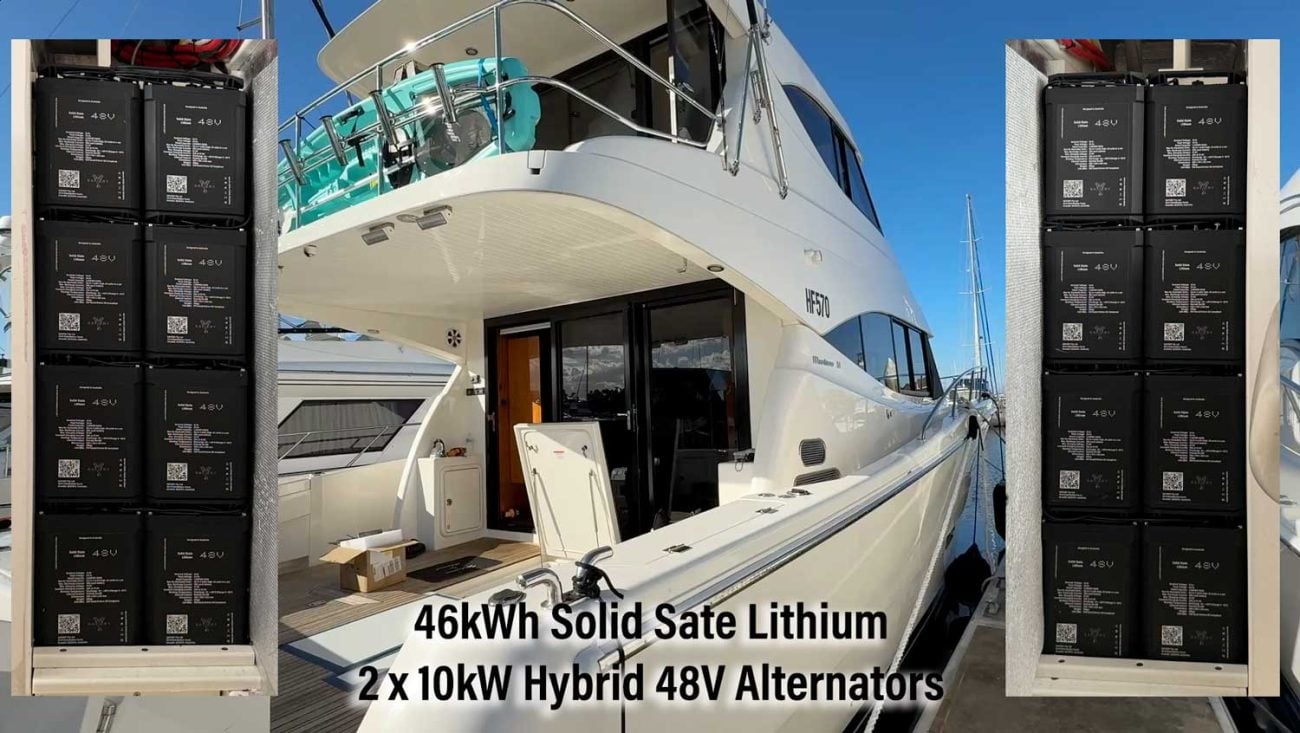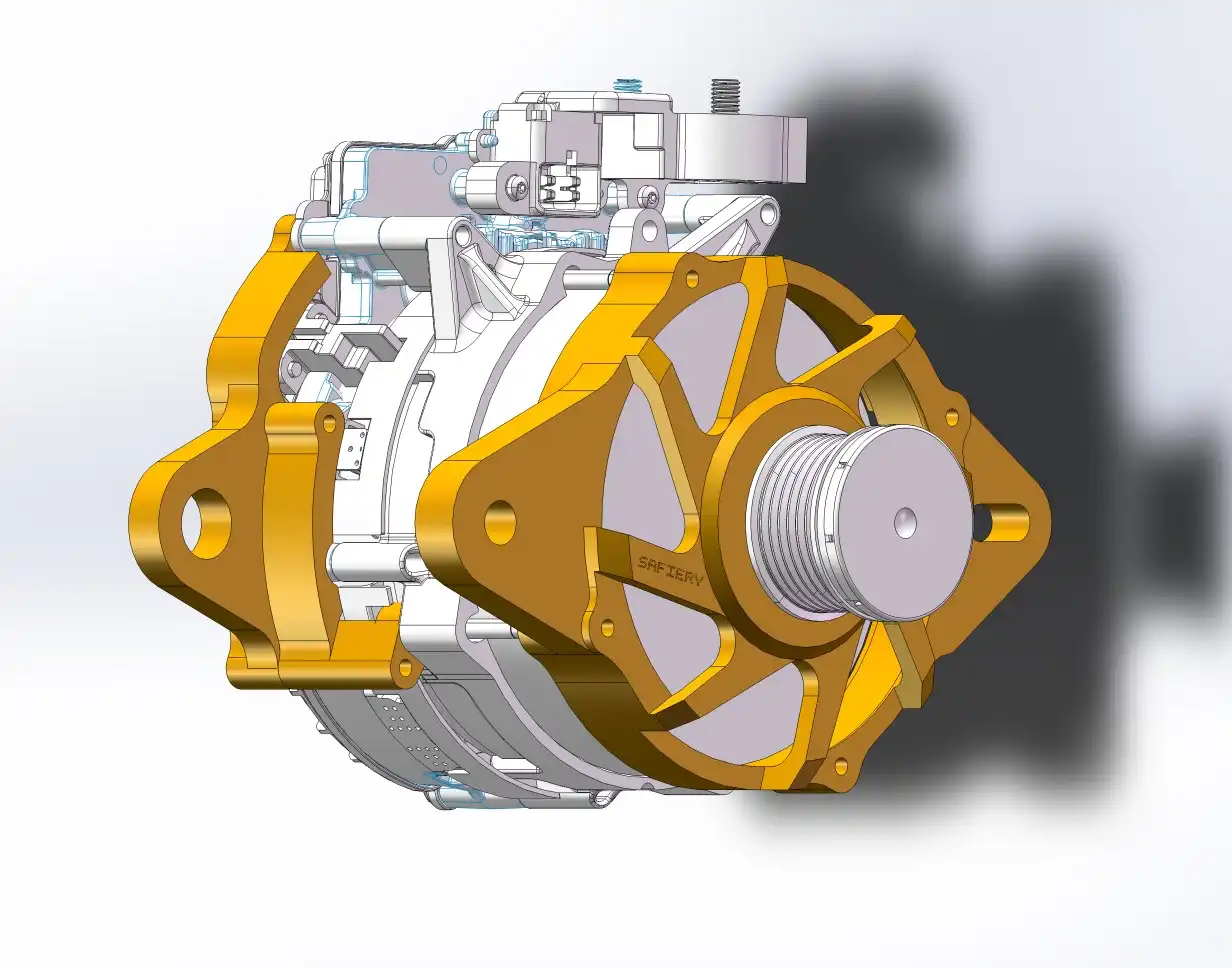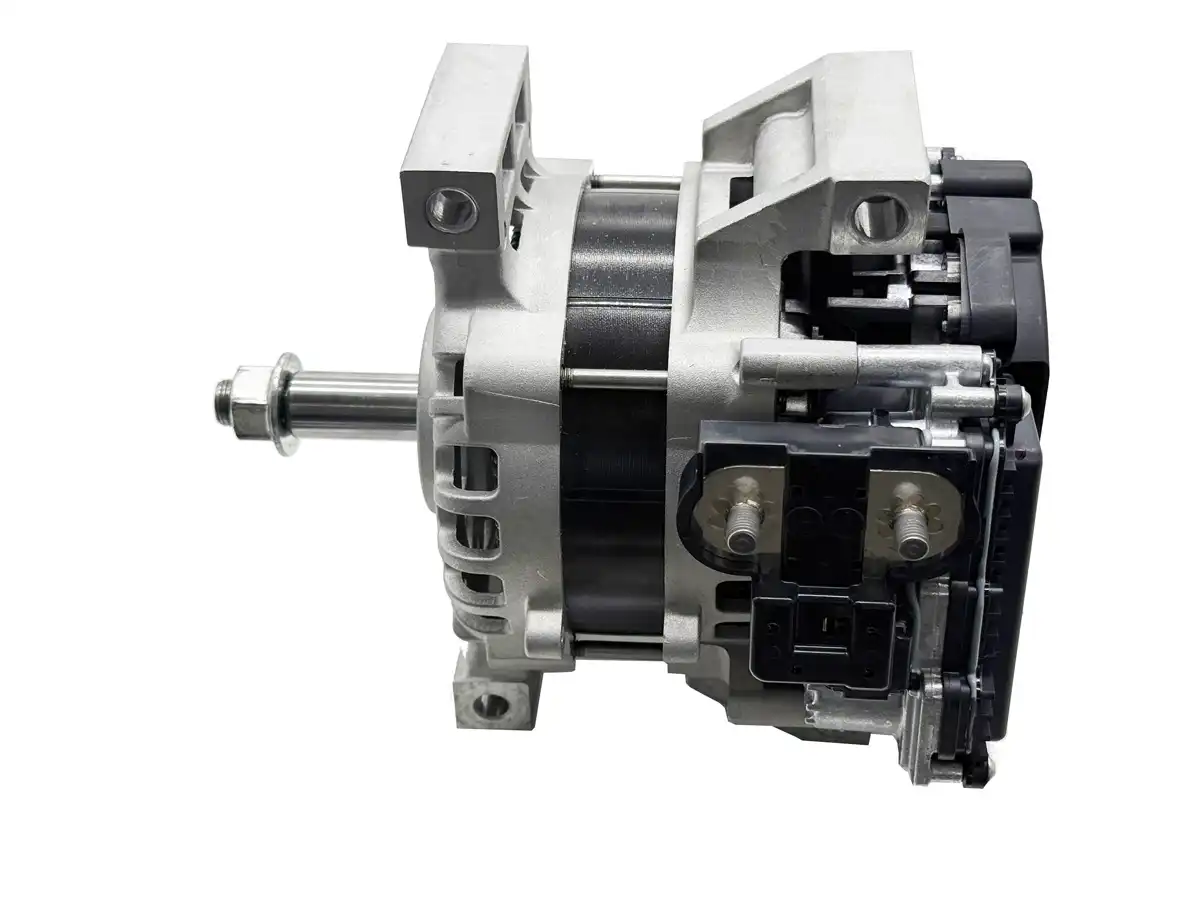48V BiDirectional Motor Generator for Sprinter with 12V 3000W Auxilliary Power
AUD8,970.00
Note: The price added to the cart is exclusive of GST.
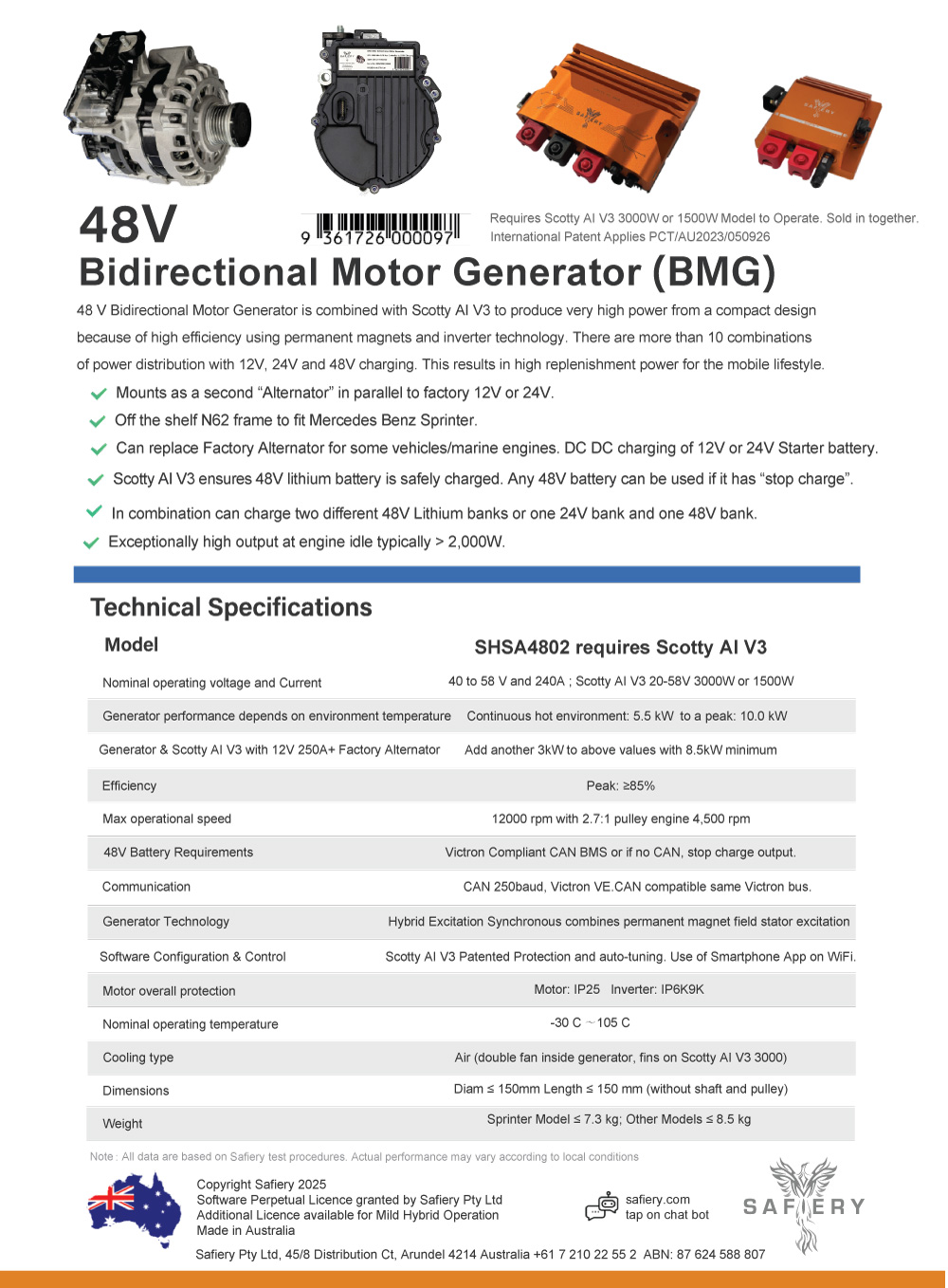
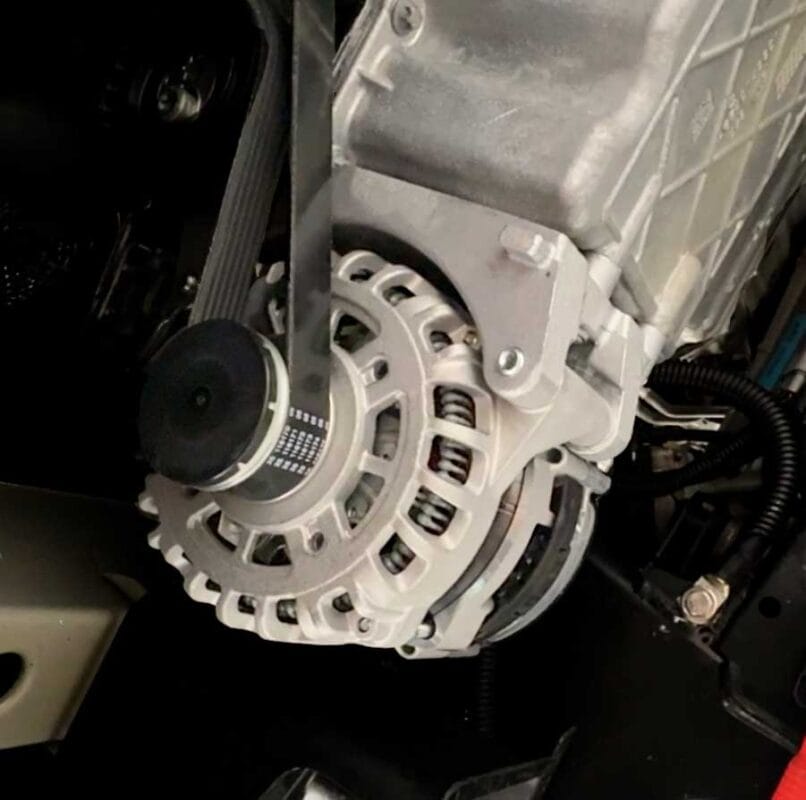
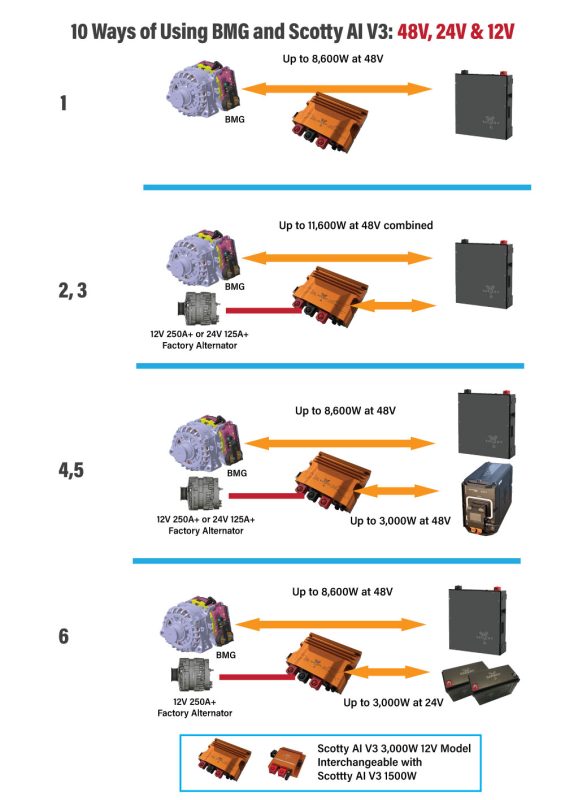
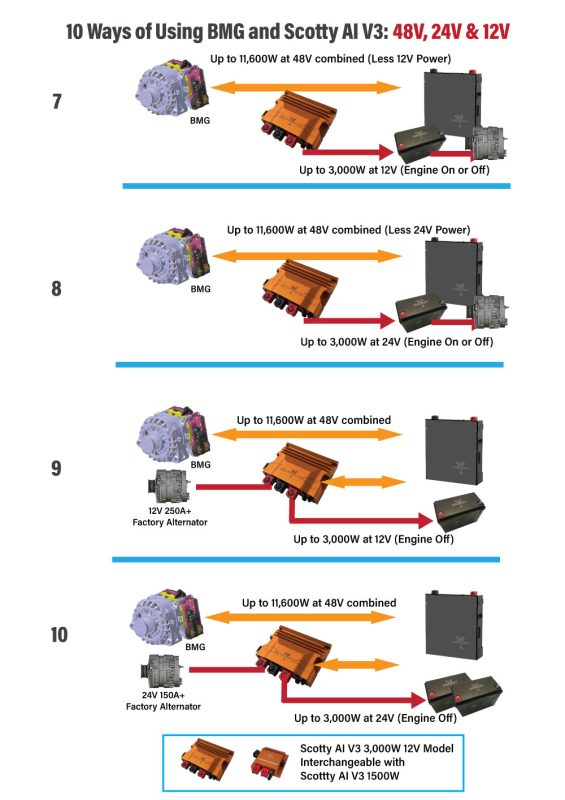
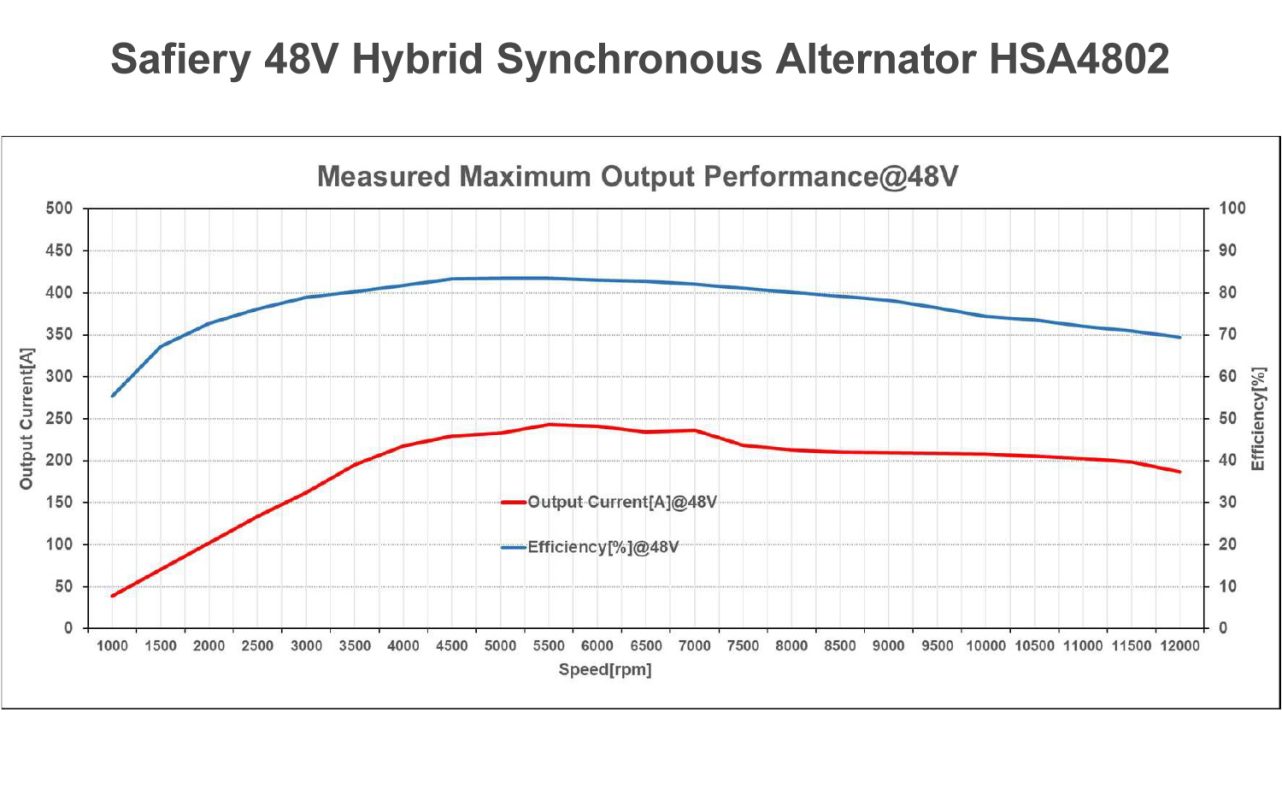
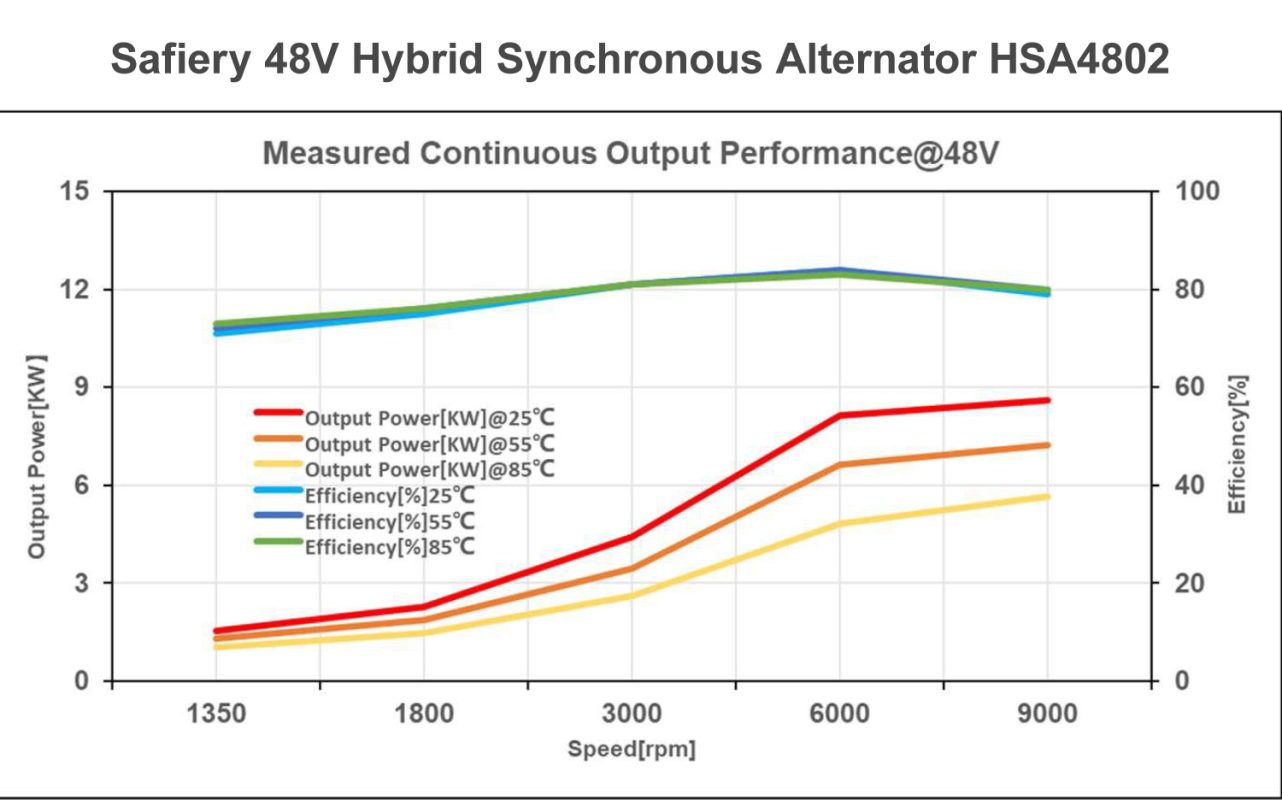
Scotty AI V3 and Bi-Directional Motor Generator are perfect partners
- CAN Communication Protocols:
- The BMG supports standard CAN commands from a supervisory controller.
- Supervisory Control:
- Through CAN commands from SCOTTY AI V3, the voltage and current limits for the alternator can be set based on the charging requirements of the high side 48V lithium battery. This feature is crucial for optimizing the alternator’s performance based on battery type and system requirements.
- The BMG uses closed-loop control algorithms to maintain precise output voltage and current levels set by Scotty AI. Feedback from the system is monitored and processed to adjust the output dynamically, ensuring safe and efficient charging.
- Modes of Operation:
- The BMG can operate in several modes configured by Scotty AI:
- Torque Motor Mode: Limits output based on torque constraints.
- Generator Mode: Produces power based on predefined voltage/current settings.
- Autonomous Mode: Allows operation should CAN fail as a “limp home” mode without external control, using pre-configured low power settings.
- Idle Mode: Zero output when not required, reducing engine load.
- The BMG can operate in several modes configured by Scotty AI:
- Integrated Inverter with Load-Dump Protection:
- The BMG features an integrated inverter that includes load-dump protection circuits. These circuits detect sudden increases in voltage and respond by clamping the voltage to safe levels, preventing damage to the BMG and downstream electronics.
- In the event of a load dump, the software can adjust the BMG’s output to mitigate the effects of the voltage spike, ensuring stable operation.
- Benefits of CAN-Based Control
- Precise and flexible adjustments.
- Compatibility with modern Vehicle Engine Controls.
- Enhanced safety through built-in diagnostics and monitoring.
- Efficient integration into multi-device systems (e.g., combining factory alternator).
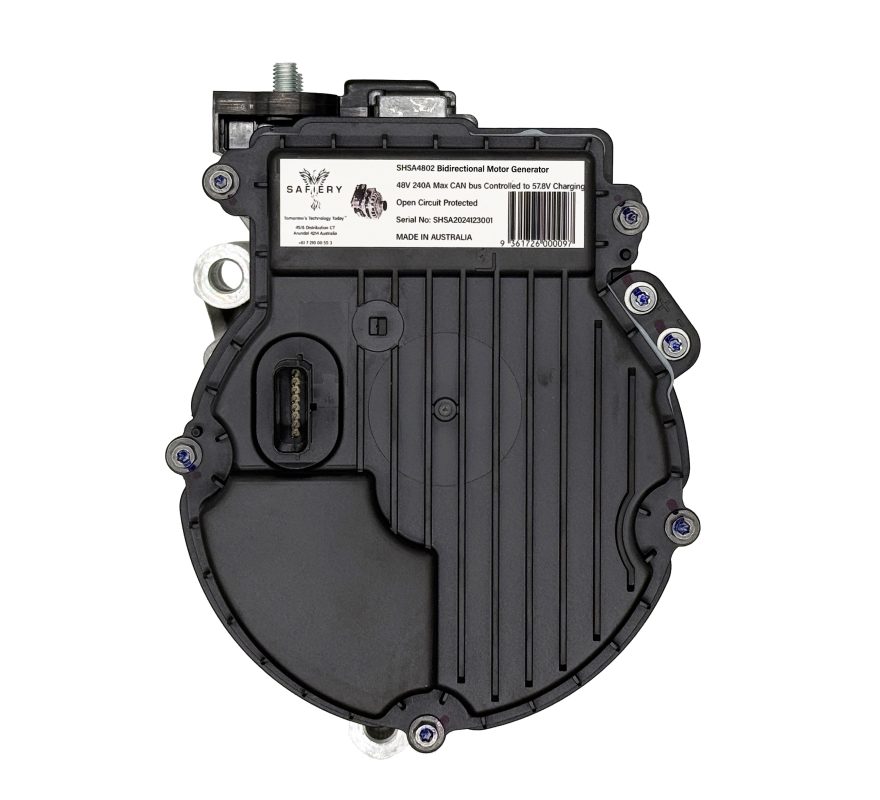
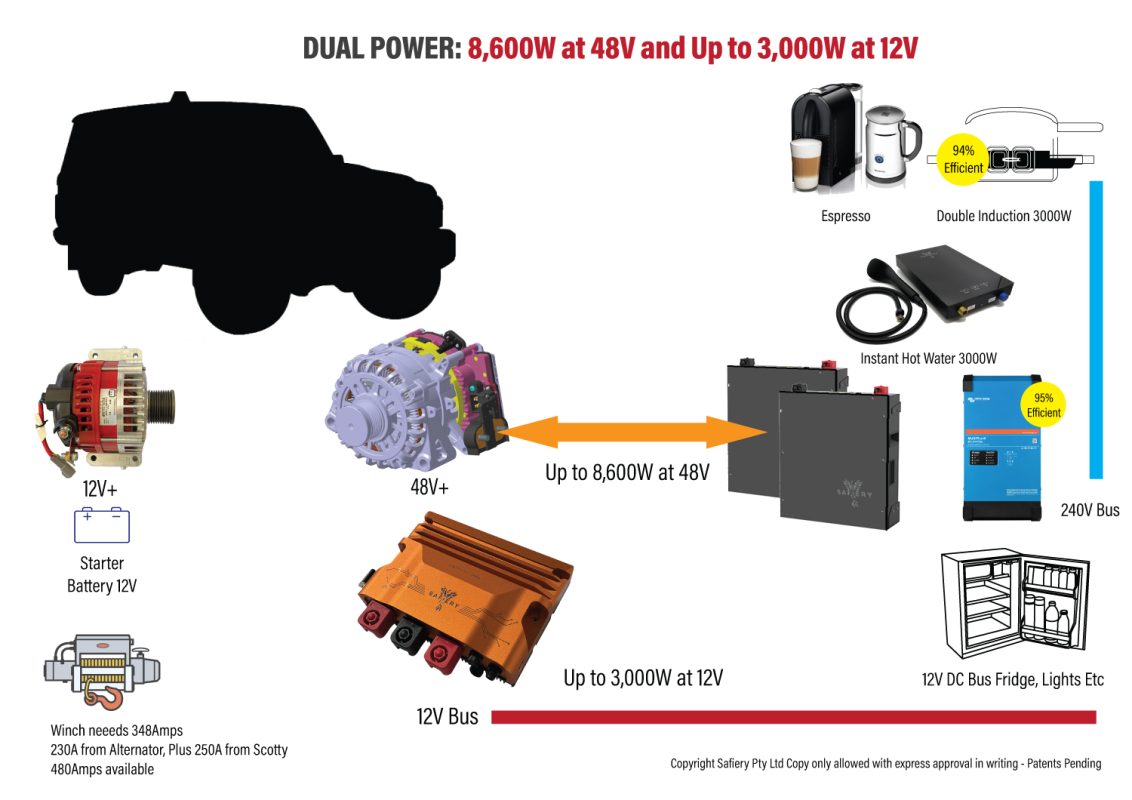
1960’s
5.5kW output at 60-70% Efficiency
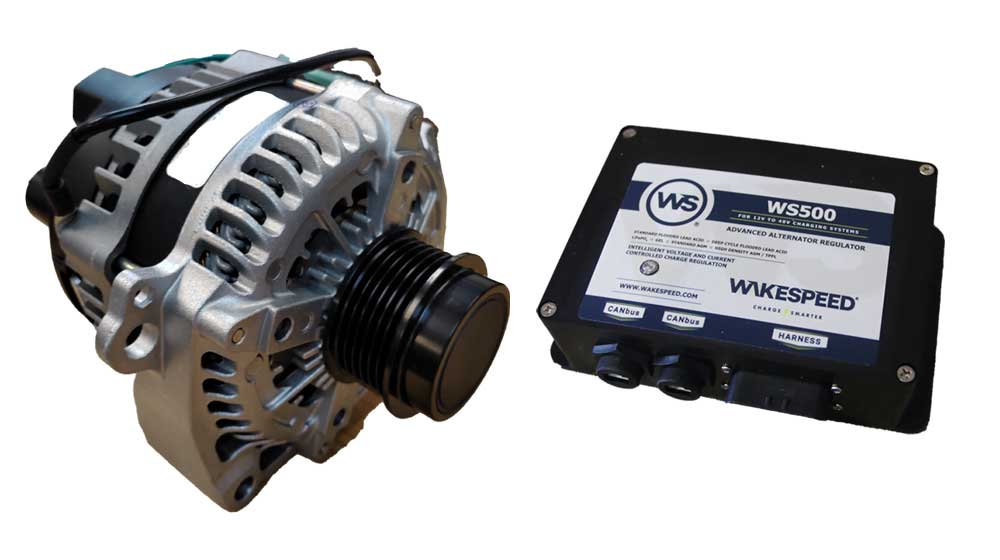
2024’s
8.6kW output at 90% Generator Efficiency AC -DC Inverter 94% Efficiency
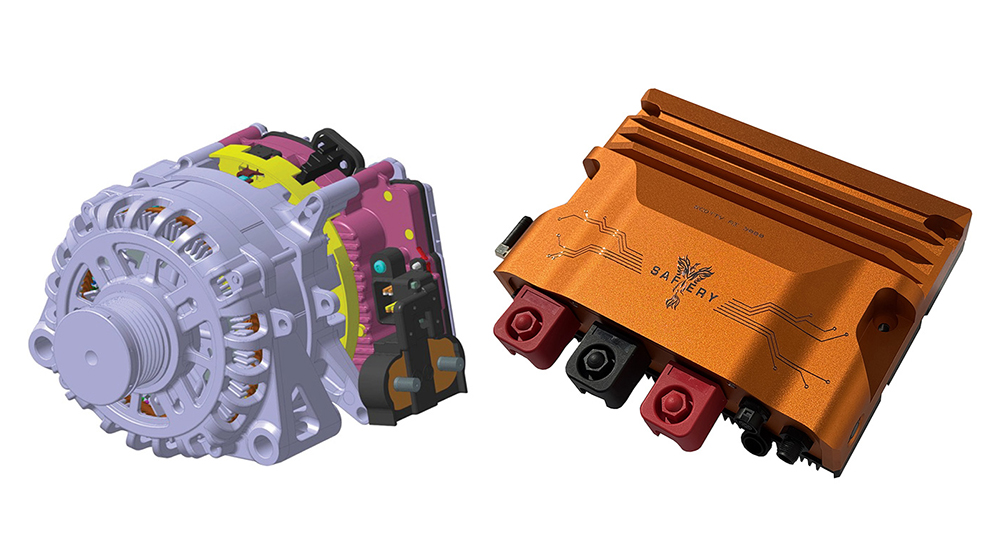
- Traditional Alternator with Diode Rectifier:
- Working Principle:
- Converts mechanical energy to electrical energy using field current through wound wiring to generate the rotor’s magnetic field.
- Uses a diode rectifier to convert the AC output into DC.
- Remote regulators that control this field current are brands like Wakespeed, Balmar and Zeus.
- Features:
- Relies on mechanical excitation (often through brushes and slip rings).
- Inefficient at partial loads due to fixed excitation.
- Cannot dynamically adjust magnetic flux.
- More wear and tear due to mechanical components like brushes.
- Vulnerable to a load dump if the power circuit is opened before the field control circuit can collapse. (1-2 Second delay)
- Applications:
- Simple, cost-effective systems since the 1960’s with low efficiency requirements.
- Traditional Alternator with Diode Rectifier:
- Working Principle:
- Converts mechanical energy to electrical energy using field current through wound wiring to generate the rotor’s magnetic field.
- Uses a diode rectifier to convert the AC output into DC.
- Remote regulators that control this field current are brands like Wakespeed, Balmar and Zeus.
- Features:
- Relies on mechanical excitation (often through brushes and slip rings).
- Inefficient at partial loads due to fixed excitation.
- Cannot dynamically adjust magnetic flux.
- More wear and tear due to mechanical components like brushes.
- Vulnerable to a load dump if the power circuit is opened before the field control circuit can collapse. (1-2 Second delay)
- Applications:
- Simple, cost-effective systems since the 1960’s with low efficiency requirements.
Diode Rectifier
AC Alternator output conversion to DC Power
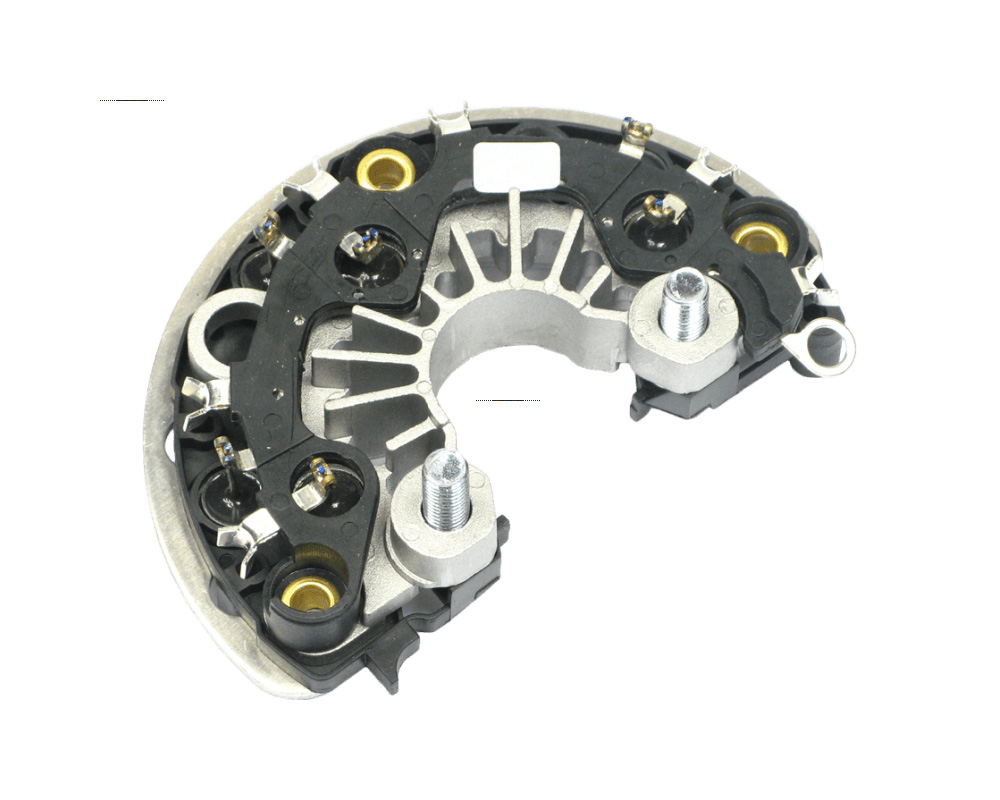
Inverter Technology
AC Synchronous Motor to DC output Power
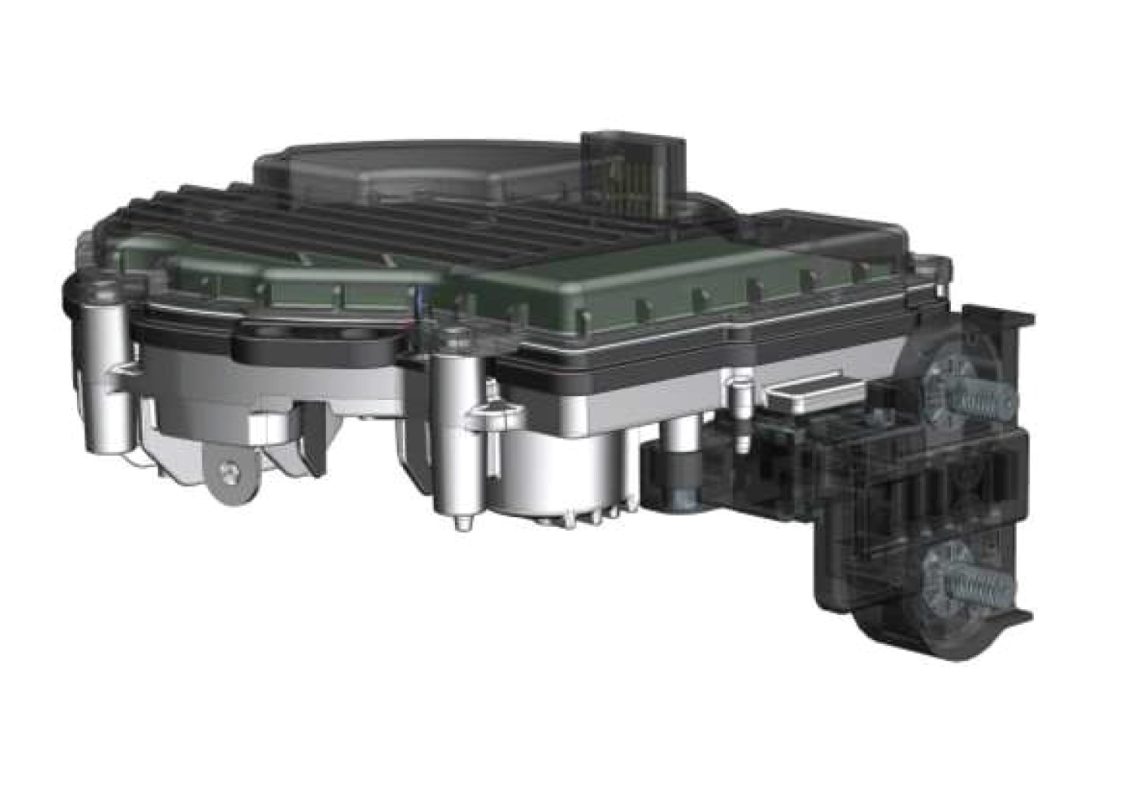
lorem ipsum
Lorem ipsum dolor sit amet, consectetur adipiscing elit. Ut elit tellus, luctus nec ullamcorper mattis, pulvinar dapibus leo. Lorem ipsum dolor sit amet, consectetur adipiscing elit. Ut elit tellus, luctus nec ullamcorper mattis, pulvinar dapibus leo.
lorem ipsum
Lorem ipsum dolor sit amet, consectetur adipiscing elit. Ut elit tellus, luctus nec ullamcorper mattis, pulvinar dapibus leo. Lorem ipsum dolor sit amet, consectetur adipiscing elit. Ut elit tellus, luctus nec ullamcorper mattis, pulvinar dapibus leo.
lorem ipsum
Lorem ipsum dolor sit amet, consectetur adipiscing elit. Ut elit tellus, luctus nec ullamcorper mattis, pulvinar dapibus leo. Lorem ipsum dolor sit amet, consectetur adipiscing elit. Ut elit tellus, luctus nec ullamcorper mattis, pulvinar dapibus leo.




